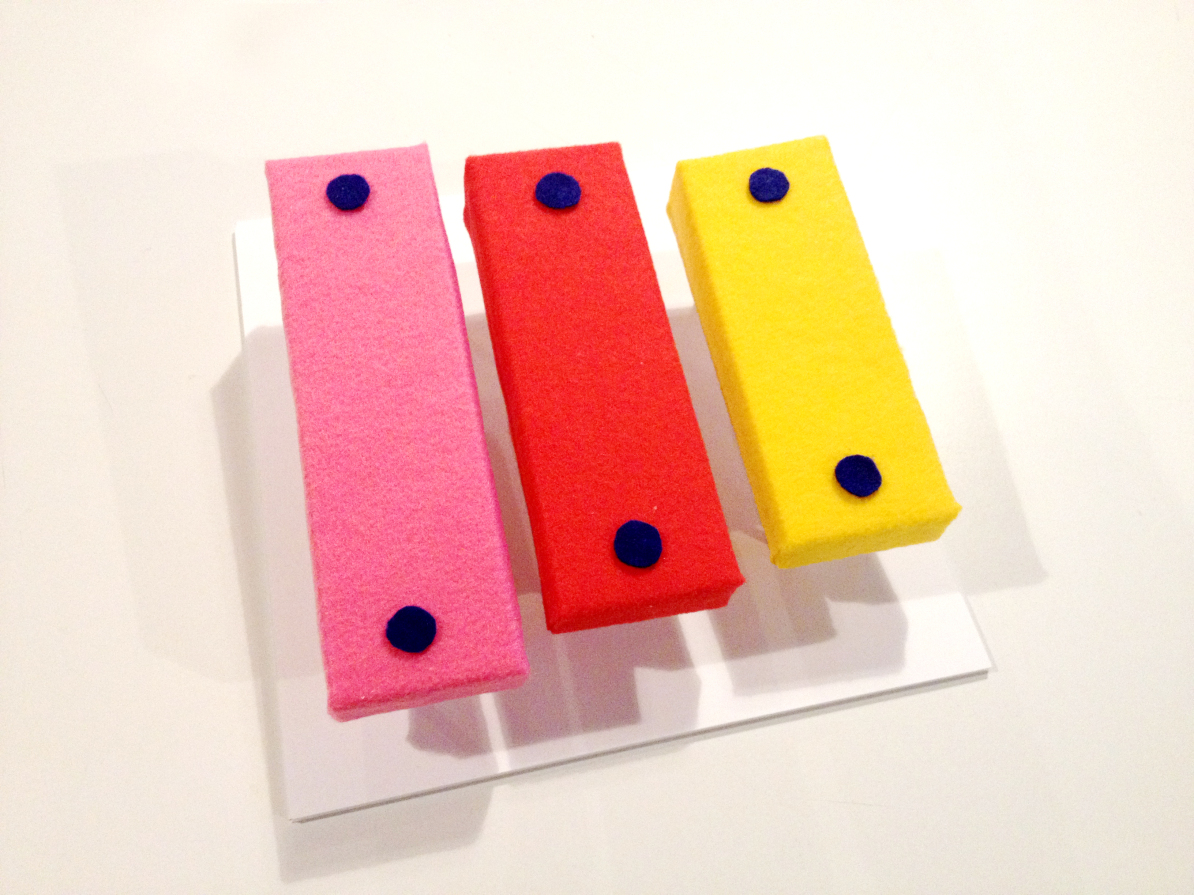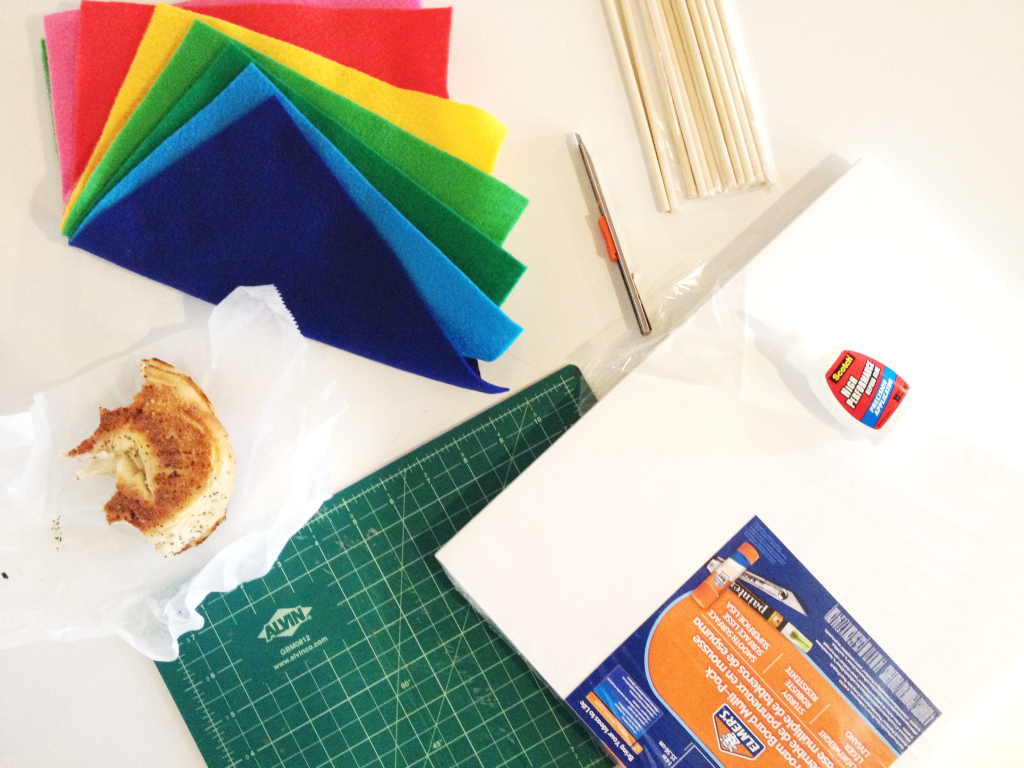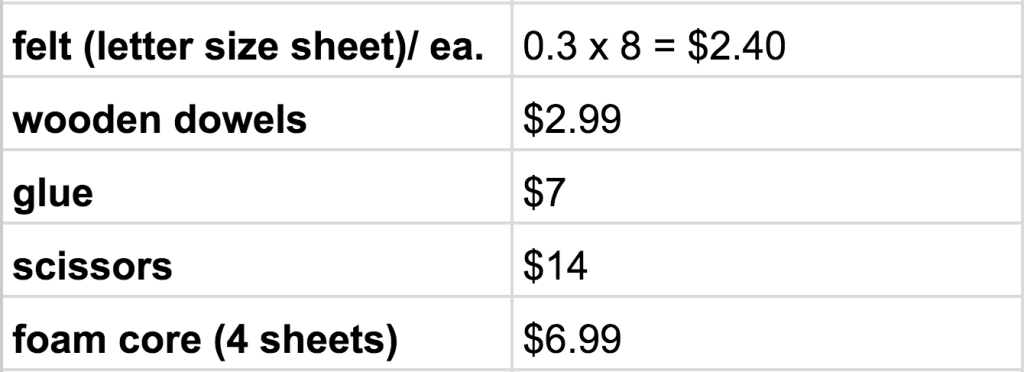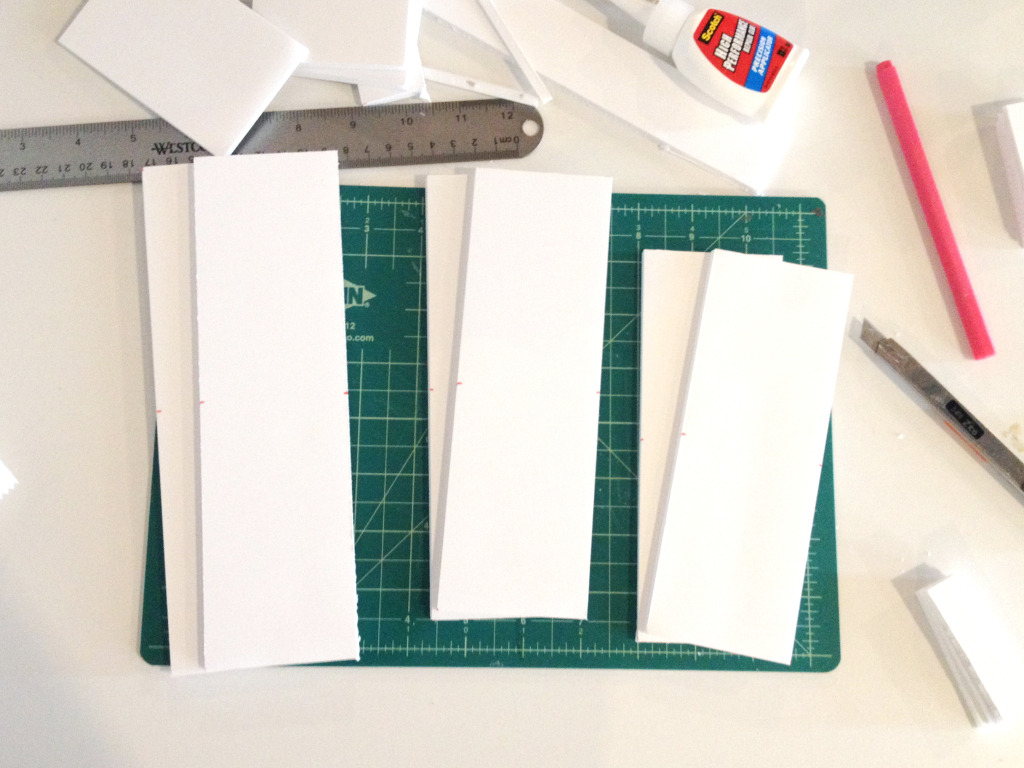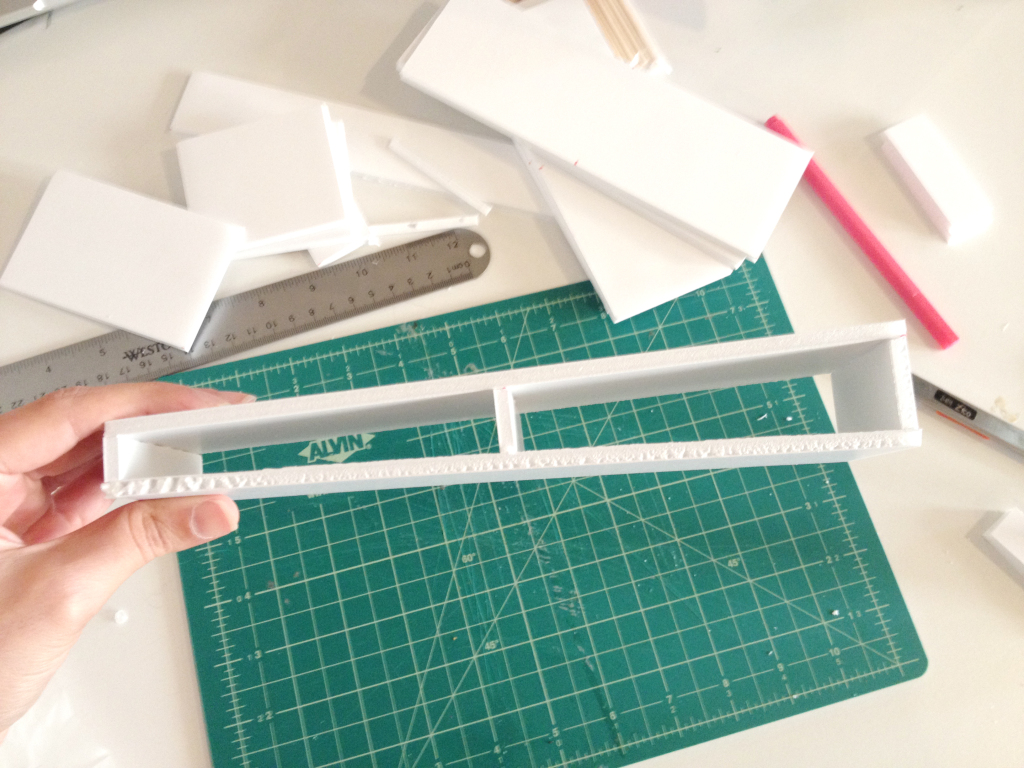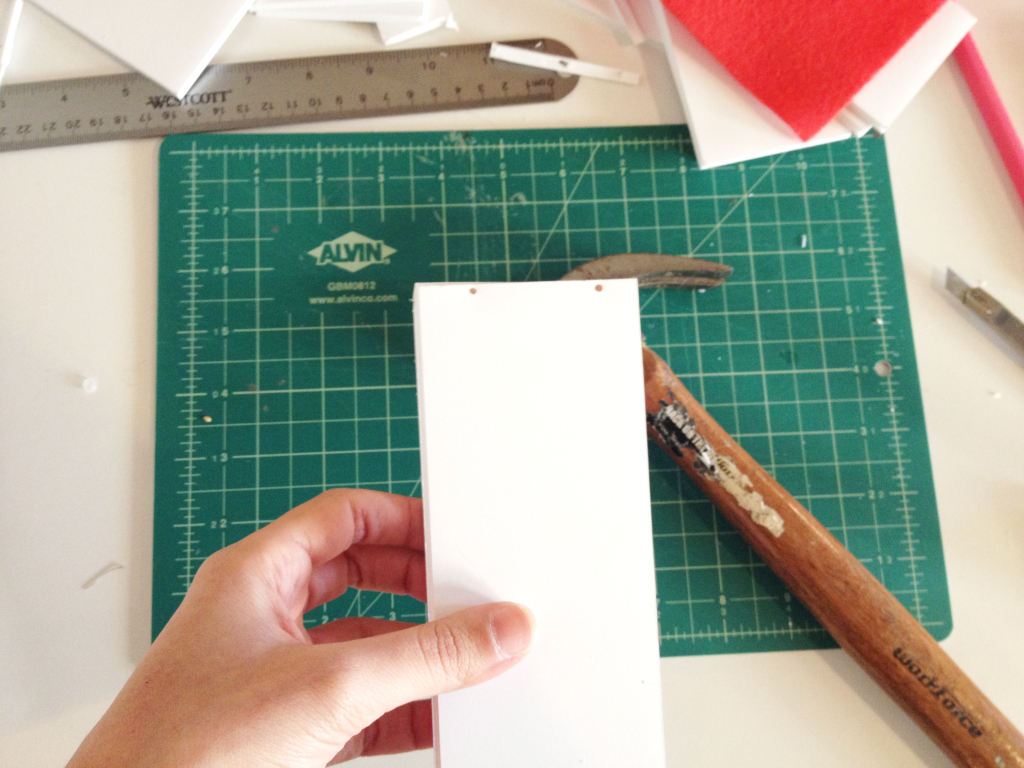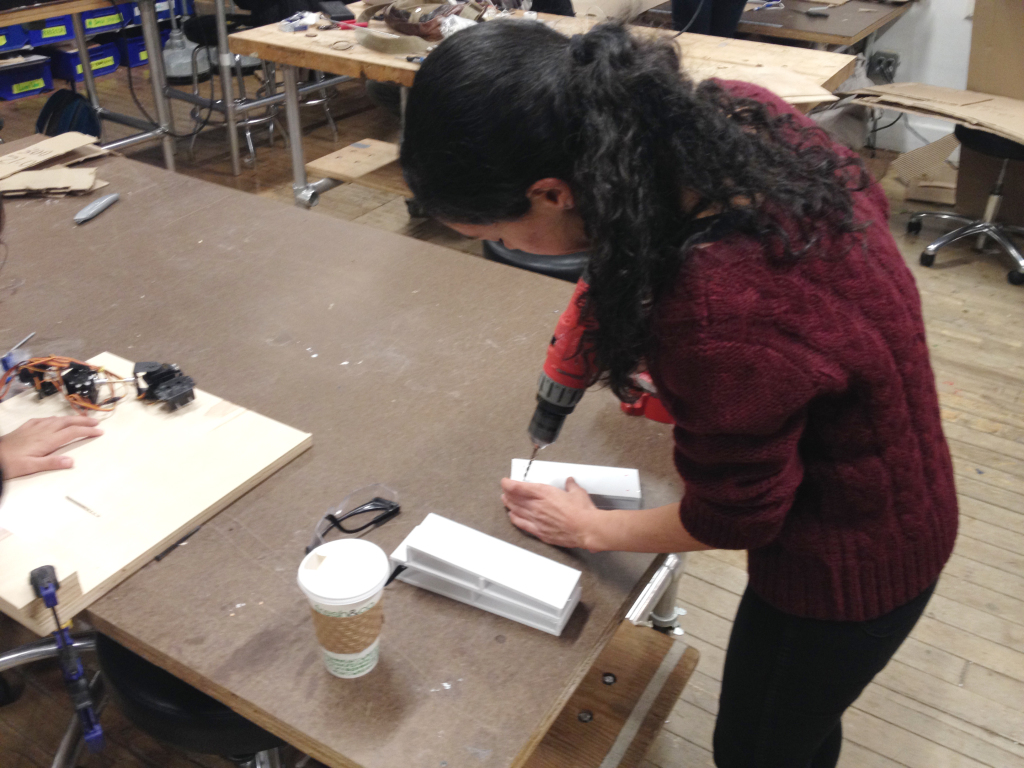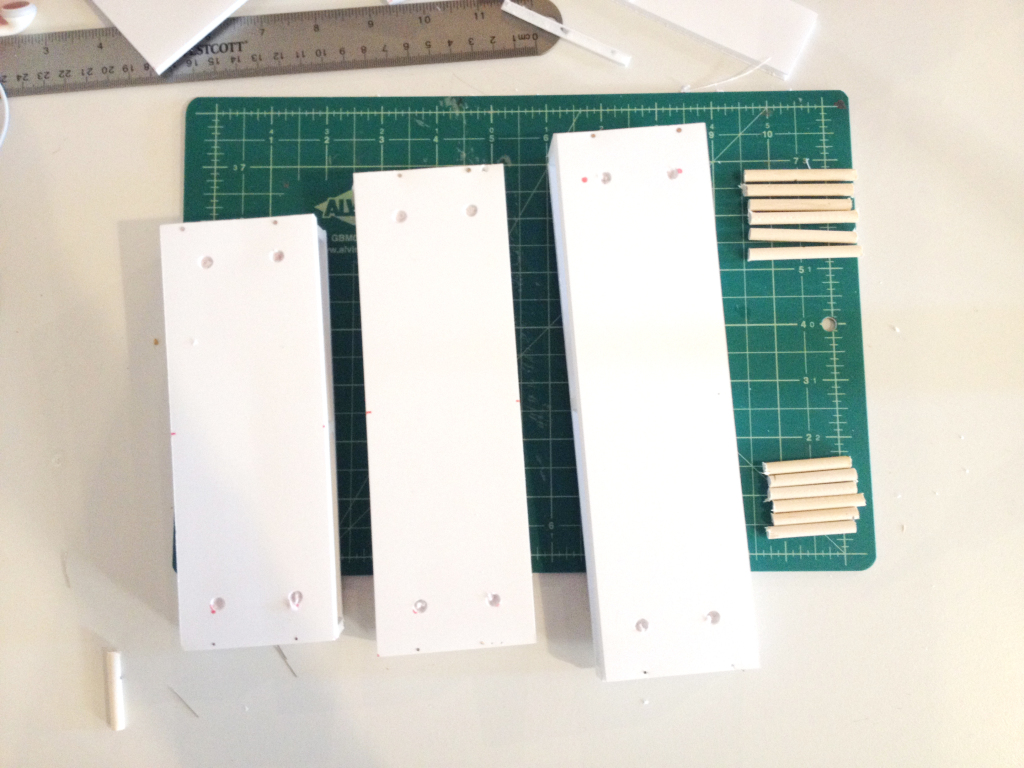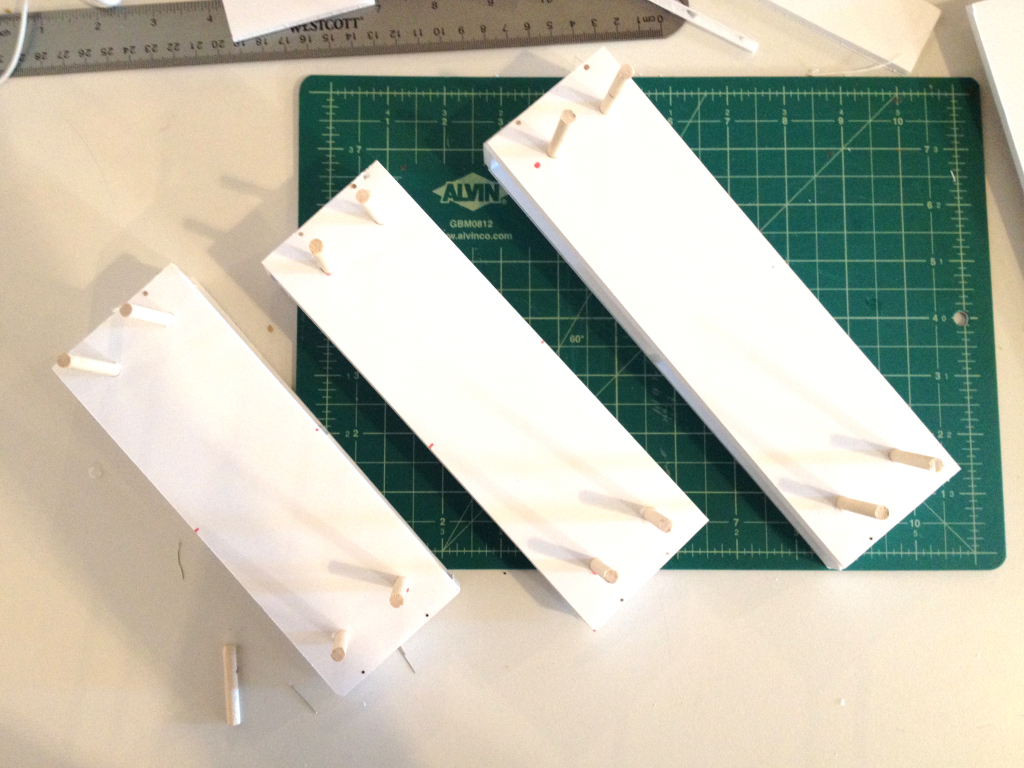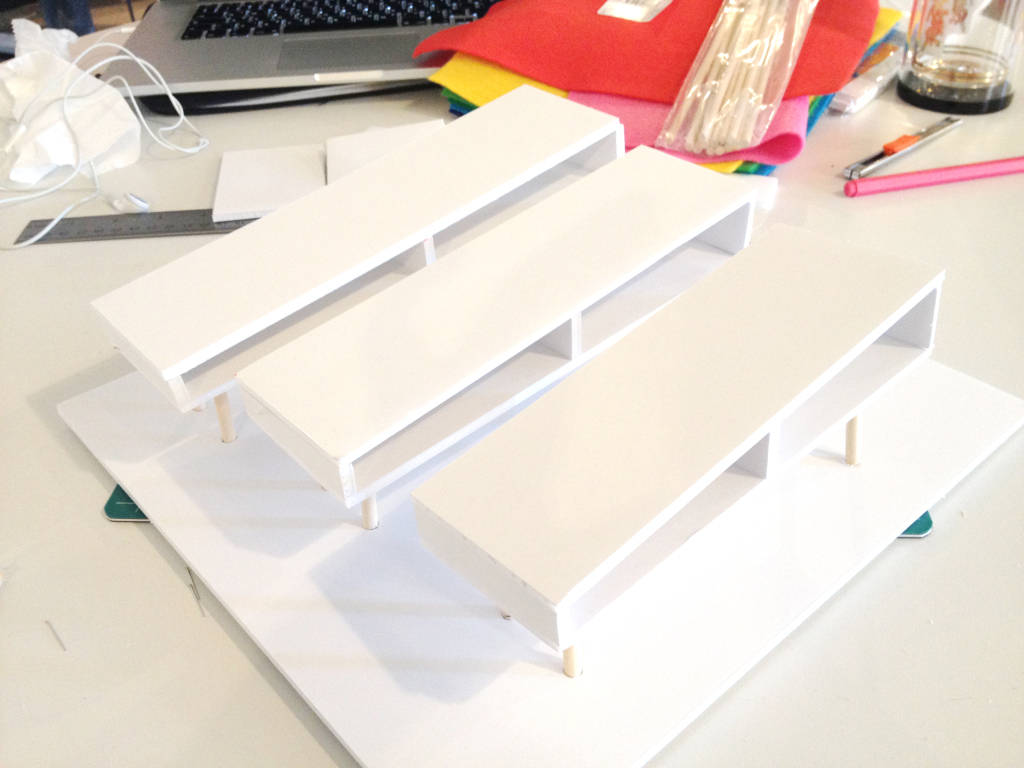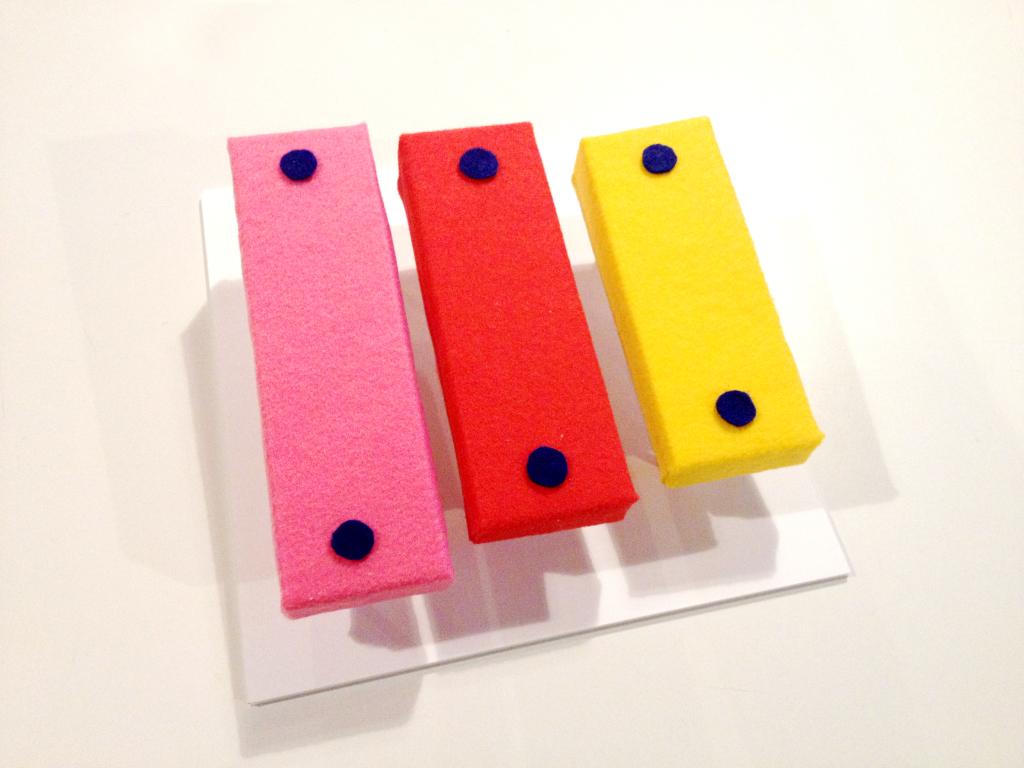In this week’s prototype we experimented with materials to create the physical object of the Silophon. Felt seemed to be a good material to work with for two primary reasons:
- Felt is a relatively soft material, hopefully encouraging children with autism to engage with it.
- Felt has a sound-proofing attribute, since it absorbs sound.
For the prototype this week, we used foam core as a base, felt, and wooden dowels.
Here’s our shopping list! (Bill of materials for the prototype):
For a prototype to experiment with, we thought that three note of the xylophone would be a good number to begin with. We started of by cutting 6 panels from the foam core, 2 for every note. These panels were then connected with three connecting pieces, giving the notes a slight angle.
The pieces of foam core were all glued together, but the ensure they would be sturdy enough, we reinforced the connections with small pins (I guess you could call these prototyping nails).
Once these notes were completed, we examined a few possibilities for connecting the wooden dowels. The solution the seemed to be the best was to drill sockets in the foam core which would perfectly house the wooden dowels.
After calculating the sizes and distances, we drilled the same holes in the base. Once we got our model to stand we detached the notes from the base and covered them with felt.
The felt-covered notes do absorb sound the way we assumed they would. However, there is definitely place to rethink the fabrication aesthetically. Jacob recommended considering industrial felt, which may be a good solution but will require us to rethink how we might house all of our digital components within each key.
